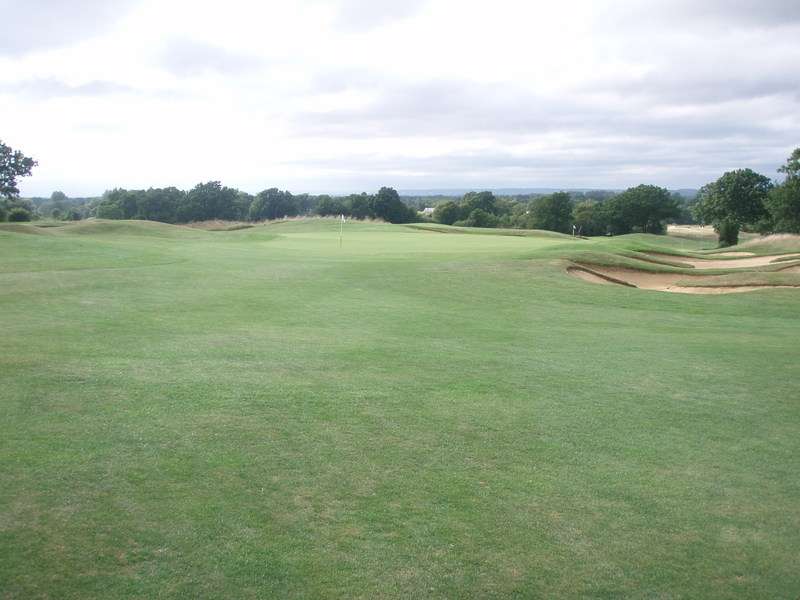I played Chart Hills recently, an early-1990s Steve Smyer course near Headcorn in Kent (about an hour SE of London, about halfway from the big smoke to Deal or Sandwich).
It's a very good, fun golf course with lots of decisions to be made on almost every hole. It has somewhere in the region of 130 bunkers (the largest of which is nicknamed The Anaconda - it snakes more than 200 yards up the right of the 5th fairway, before crossing over, as you can see in the areial of the routing). But for the most part they are part of some great strategy.
The sand is overpowering on a few holes - the short par four 9th and par five 16th particularly, where you can hardly see a spare square inch to hit your ball that isn't a bunker. But in both instances there is ample room out there, but the landing areas are hidden from view.
The par fives particularly were a case of having to plan every shot as you plotted your course to the green.
Despite the extensive use of sand, the movement of the land is a real feature of a number of holes, as hopefully my pictures will show, creating dead ground at the 1st that foreshortens the second shot in your eye and makes it seem reachable in two, or at the driveable 6th, where the fairway bunker creates a horizon behind which the green is hidden.
Elsewhere, left of the 1st green, short of the 8th green, behind the 10th green, short and left of the 12th green are great closely mown runoffs that provide a great alternative to sand as punishment for a poorly planned or executed shot.
The greens are generally quite sedate and slope naturally with the surrounding land. I think that helped greatly to feel that the holes were by-and-large draped ovver the land - though I am sure ample earthmoving was done, it seems to have been done smartly, with long landforms that run across several holes rather than short, choppy mounds that are obviously fake.
Chart Hills is a lot of fun to play, and with green fee deals under £50 available, it's currently very good value. I would recommend it to anyone. Fair play to the foreign visitor who come all this way to play heathland and links golf - I can appreciate why so few schedule a game at Chart Hills. But it is a very, very good course in its own right.
Last time around Golf World had it around #80 in GB&I (down from mid-70s the time before). That seems about right to me.
Routing

Approach to the par five 1st - see how the land adds some character, with a drop-off at the left of the green adding some interest to the approach.
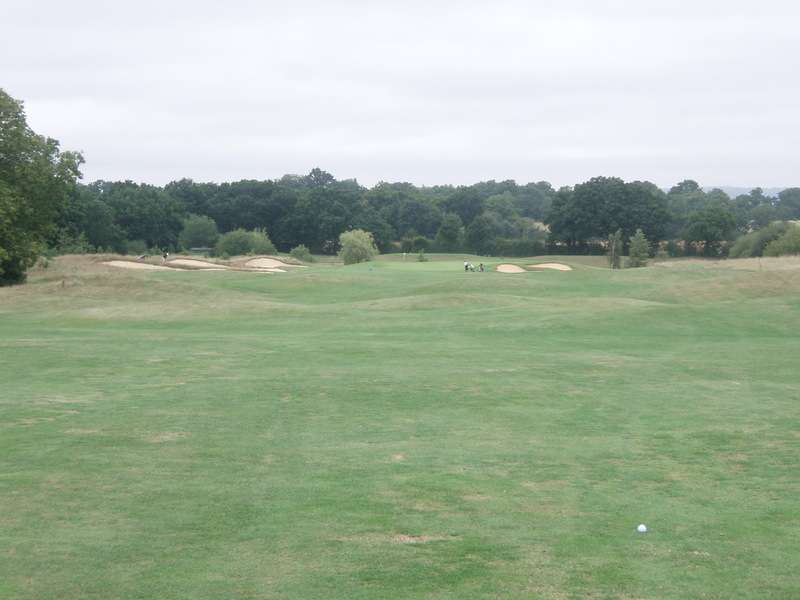
The reward for a drive that hugs the creek at the inside (left) of the dogleg on the 2nd is this view up to the green, with the ground helping you run a ball in from the safe left-hand side.
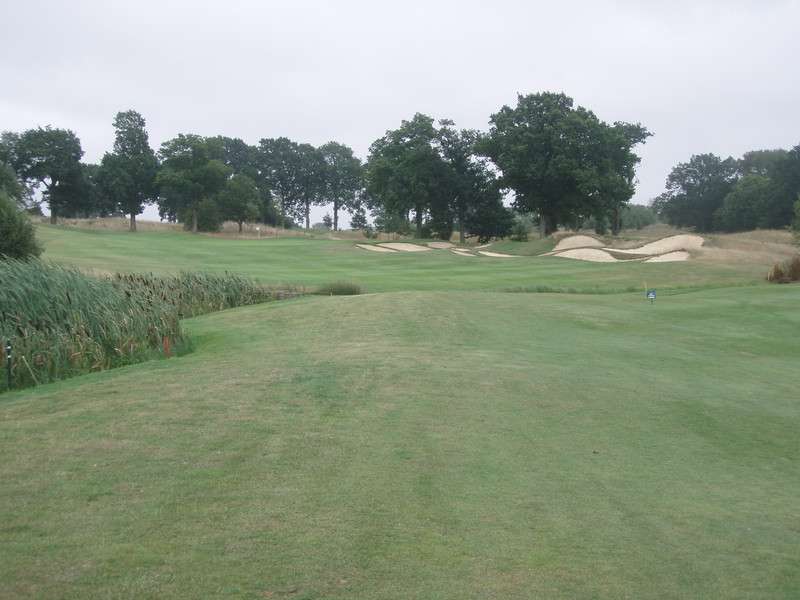
The Redan-inspired par three 3rd from above, with a strong slope short to kick the ball on and a green that slopes strongly front to back, with the fall of the surrounding land.
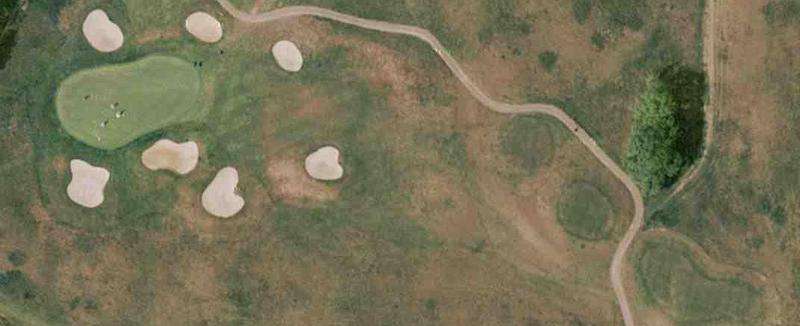
The par four 4th, like the 2nd, rewards a drive to the left, setting up this uphill approach.

Sand dominates the par five 5th, with the safe second shot played out to the right, setting up a straightforward pitch.

The 6th is one of the best short par fours I have ever played. Lots of options, punishment if you go for broke and miss right, a tough recovery if you go for it and miss left and a great deal of unknown hidden behind that bunker. You're looking at 295/280/265yds depending on the tee you choose, but all the land after the bunker feeds to the green, so even golfers who don't usually drive it those distances will feel they have a chance.

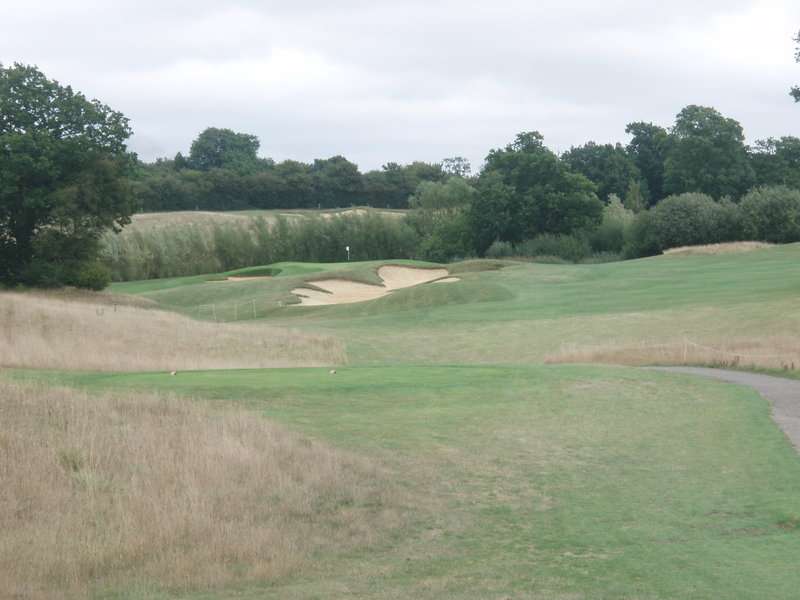

Par three 7th. A bit of a bland one, along with the 11th. The Redan 3rd and island green 17th were far more excviting.

The approach to the bunkerless par four 8th. Anything short will come back towards you down that slope and there is a similar slope behind the green to feed the ball away.
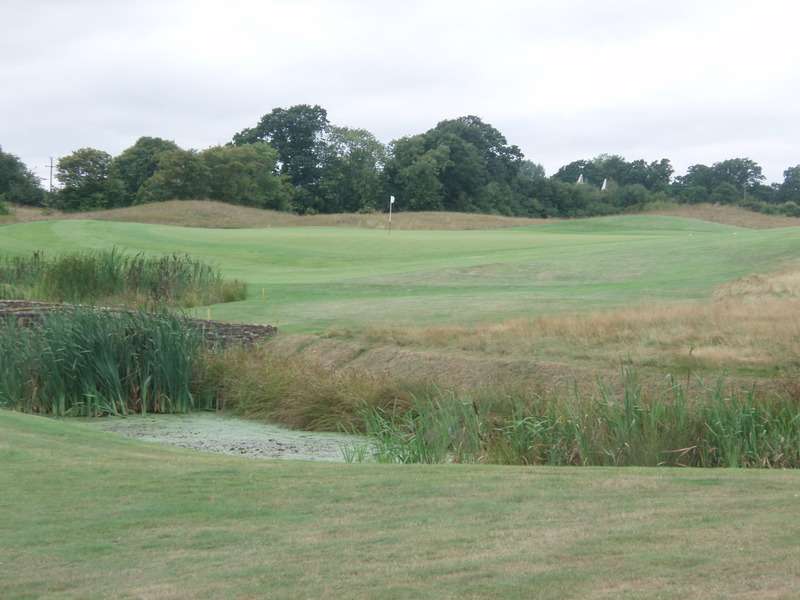
The short 9th is about 305yds uphill with a huge amount of sand dominating the hole. So much that any temptation to have a dig is quashed, really, but a unique hole nonetheless.
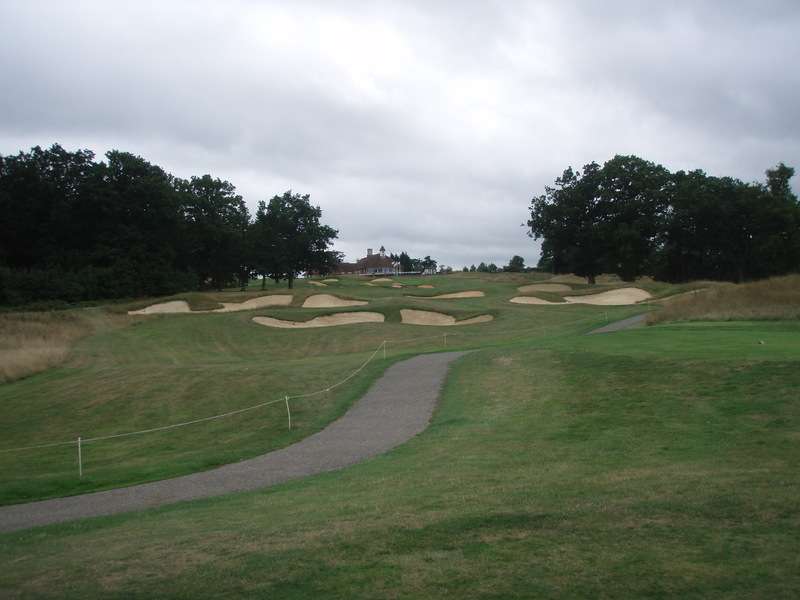
The 10th has some great undulations in the land as it doglegs left, setting up this approach to a green with some Redan characteristics, guarded short by the bunker you can see and behind by a feeding area you can't, that will run you long leaving a delicate chip back up the hill.
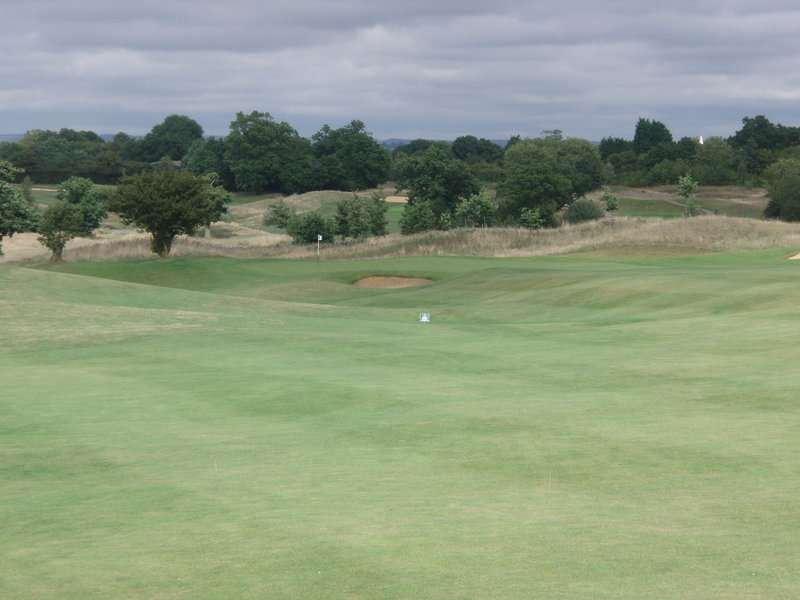
Par three 11th, slight false front adds some interest, but still a bit "bleh" in my mind.
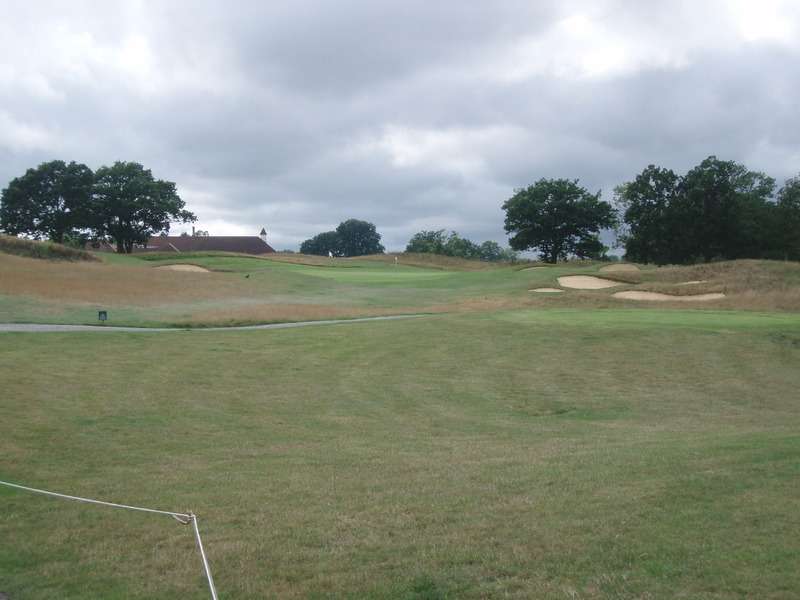
The approach to the par five 12th, which plays downhill and is eachable for bigger hitters, but the have to fly a creek about 50yds short of the green and split the bunkers right and strong downslope to the left.

The par four 13th felt a bit forced, doglegging hard left around two other holes (a creek and thick scrub deter you from cutting the corner and playing across those holes), but the approach had some good interest.
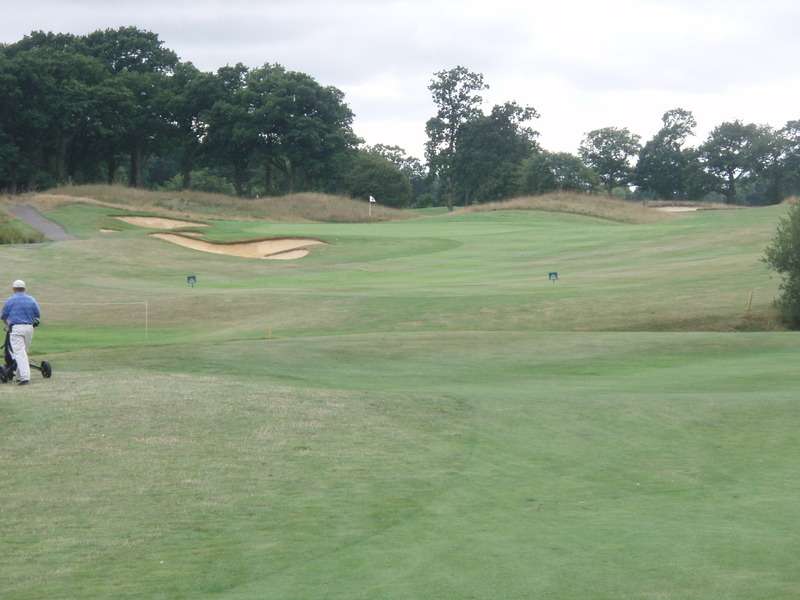
The short par four 14th.
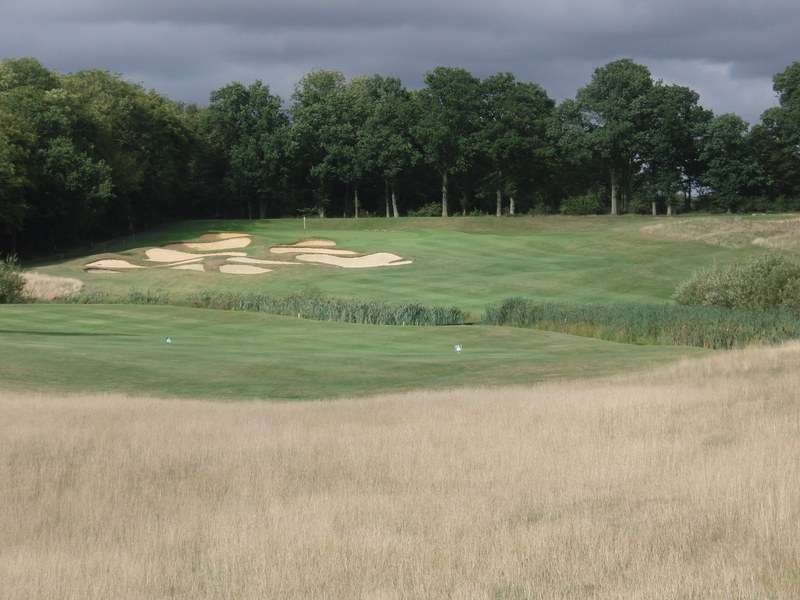
The approach to the par four 15th, with some nice blindness, the green fed by the strong slope on the left. Just lots of fun all-round.
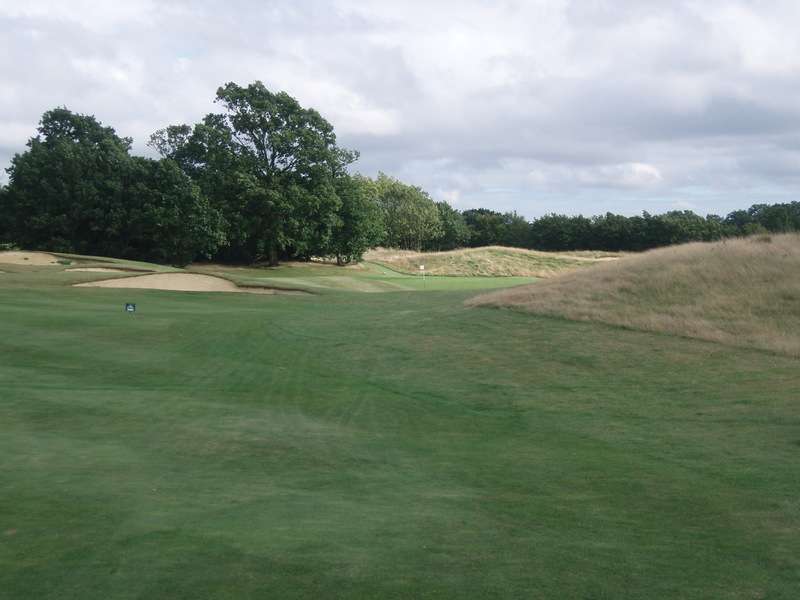
The 16th plays long uphill threaded through a sea of sand with blind landing areas, culminating in this green, which cascades down the hill in three tiers. Pictured is Tony Muldoon, who as I took the shot was turning to say "isn't this a fantastic green?!"

Island green 17th. Love them or hate them, I have to say at five-under-handicap after 16 holes it gives you a feeling in your stomach that few other holes can match. Only plays 145yds from the back or 130-odd from the middle tee, so not an unfairly long shot for an island green. I liked it.

The mid-length par four 18th asks you to huge the left to get an unobscured view of the green for your approach.
